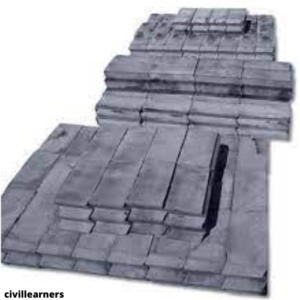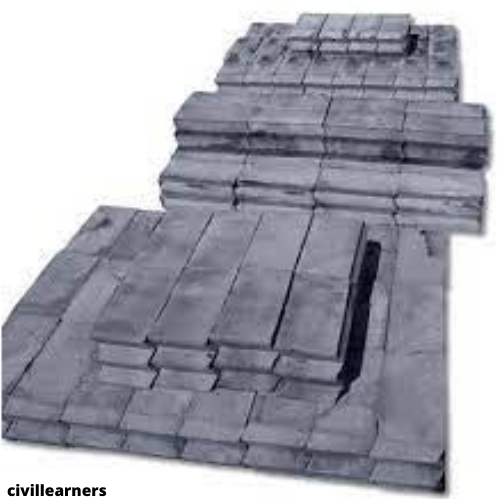HIGH-DENSITY CONCRETE
Concrete with a weight of 30 kN / m3 to 64 kN / m3 is called high density or heavyweight concrete. Thus, the unit weight of high-density concrete is about 25 percent higher than conventional concrete in the 24 kN / m range.
This concrete can be produced using a variety of heavy-weight aggregates. This concrete is used for the construction of nuclear radiation shield walls, ballast blocks, counterweights, marine walls, and other applications where high density is important.
As a shielding material, these concrete nuclear reactors, radioactive material production facilities, particle catalysts, industrial radiography, and radiation protection from X-ray and gamma-ray therapy protect users against radiation.

Shielding against biological hazards of radiation mainly includes protection against X- and gamma rays and neutrons. The armor must be weak enough to be effective radiation so that it does not damage the cells of the body of the user exposed to them.
In addition to biological hazards, nuclear reactors produce extremely high temperatures (cracks on the outer face of the concrete), and armor is needed to protect the surrounding electronic and other sensitive equipment.
The choice of concrete for radiation shielding is based on space requirements and the type and intensity of radiation.
Where there are no space constraints, common-density high-performance concrete usually provides the most economical shield; If space is limited, this concrete will allow shield thickness to be reduced without sacrificing shield effectiveness.
High-Density Aggregates
High-density materials such as barite, ferrophosphorus, gothite, hematite, limonite, magnetite, and D-grease scrap steel and steel shot with specific gravity from 3.4 to 7.8 are used to produce this concrete with approximately unit weight. 30 to 60 kN / m3.
Properties of High-Density Concrete
Similar to normal-weight concrete, the properties of this concrete in fresh blended and hardened conditions can be adjusted to meet the application requirements through proper selection of materials and mixing ratios.
Except for density, the physical properties of this concrete are similar to those of normal-weight concrete.
As usual, energy is a function of the ratio of water-cementing materials; Thus, for any given material, strengths comparable to those of ordinary weight concrete can be achieved.
In the case of conventional concrete, high modulus of elasticity, low thermal expansion, and low elasticity and creep deformation are desirable properties of overweight concrete.
Also, watch this for a better understanding
This concrete may have a higher cement content; In that case, it may exhibit increased creep and shrinkage.
When steel or iron is used as a coarse aggregate of smooth cubic pieces, the compressive strength shall not exceed 21 MPa, regardless of the grout mix or water-cement ratio.
Using a piece of chopped reinforcement bars as a whole, with good grout, can produce normal strength. Grout is used this concrete should be slightly richer than that used in normal-density precast concrete.
Typical concentrations of concrete made with some commonly used high-density aggregates are given in Table 14.12.
Proportioning, Mixing, and Placing
The methods for selecting the mixing ratio for this concrete are similar to those for ordinary density concrete. The water-cement ratio varies from 0.5 to 0.65, usually from 1: 5 to 1: 9.
They produce dense and crack-free concrete. The most common methods of mixing and placing concrete with high density are as follows:
The traditional concrete practice of mixing, shipping, and placing can be adapted to heavy-weight concrete as applied to ordinary concrete, but be careful not to overload the mixer, especially with high-density aggregates such as scrap steel and shot.
Batch sizes should be reduced to about 50 percent of the rated mixer capacity. Since some aggregates with high density are sufficiently friable, excessive mixing should be avoided to prevent overall disintegration with detrimental effects on viability and bleeding.
To prevent the separation of heavier aggregates from the rest of the material, a higher cement content may be required; good workability helps to reduce isolation.
You may also like: Gap graded concrete
The erosion and tears of the mixer drum may be high. Formwork needs to be done strongly to withstand high loads.
The default aggregate methods of concrete can be used to place higher-density concrete in confined areas and around embedded materials; this reduces the total isolation of coarse with high density, especially scrap steel.
The method reduces drying shrinkage and produces uniform density and composition of concrete. With this method, the coarse aggregates are replaced with cementing material and sand forms, and grout and then pumped through pipes to fill the water. Zeros accumulate.
Pumping this type of concrete through pipelines is advantageous in places where space is limited, but concrete with maximum density due to its maximum density is not pumped to normal density concrete.
Pudding is a technique where a 50-mm or more mortar layer is placed in the forms and then covered with a coarse aggregate layer that vibrates with the rod or internally into the mortar. Care must be taken to ensure uniform distribution of the whole concrete.
You may also like: No fines concrete

